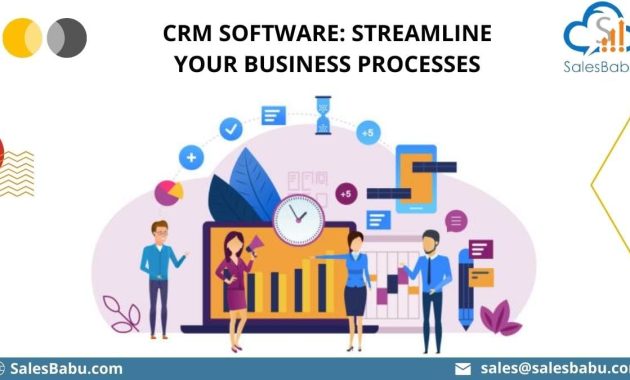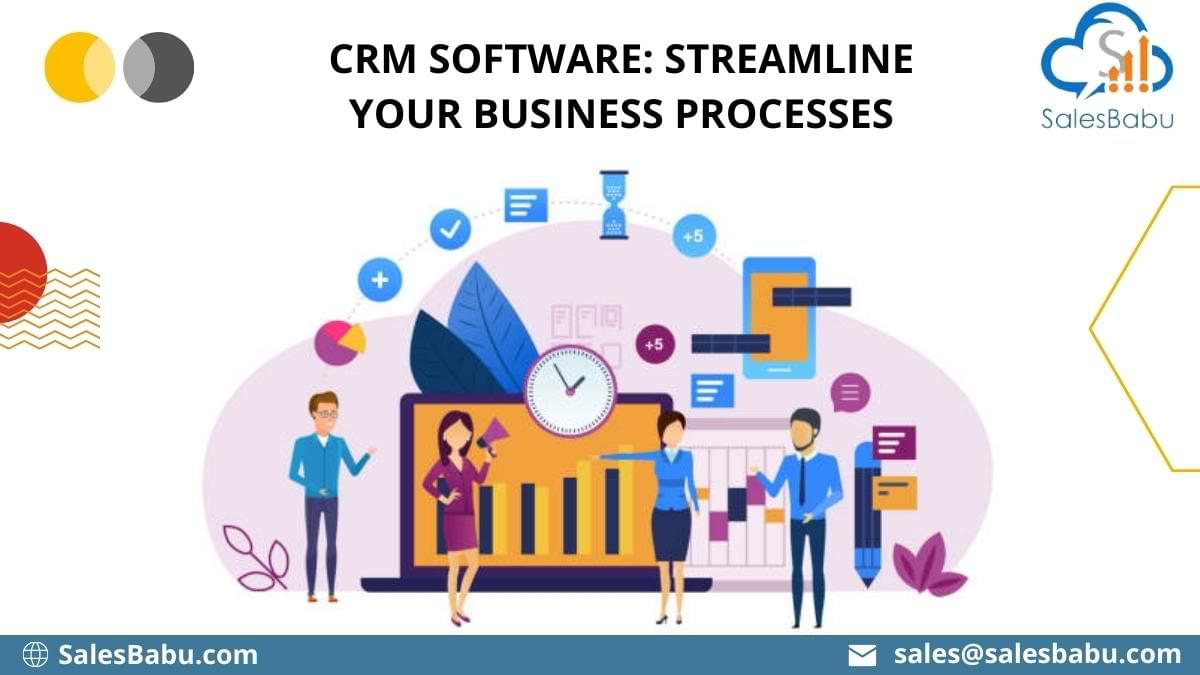
Steps to Streamline Leads for Agencies Through CRM Software: A Comprehensive Guide
In the fast-paced world of agencies, generating and managing leads is the lifeblood of growth. However, without a streamlined system, lead generation can quickly devolve into a chaotic, inefficient process. This is where Customer Relationship Management (CRM) software steps in. Implementing the right CRM can be a game-changer. It allows agencies to centralize lead data, automate tasks, and nurture potential clients effectively. This guide provides actionable steps to streamline leads for agencies through CRM software, ensuring a more efficient and profitable operation.
Understanding the Importance of Lead Streamlining
Before diving into the specifics, it’s crucial to grasp why lead streamlining is so critical. Agencies often juggle multiple projects, clients, and prospective leads simultaneously. A disorganized approach leads to lost opportunities, missed deadlines, and, ultimately, revenue loss. A CRM system acts as a central hub. It provides a 360-degree view of each lead. This allows agencies to:
- Improve lead qualification.
- Enhance communication.
- Personalize marketing efforts.
- Track progress.
- Boost conversion rates.
By streamlining the lead management process, agencies can focus on what they do best: delivering exceptional services and growing their business. The aim is to capture every lead, nurture it, and convert it into a valuable client. This can be achieved through strategic CRM implementation.
Selecting the Right CRM Software for Your Agency
The first step in streamlining leads is choosing the right CRM software. The market is saturated with options. Each has its own features, pricing, and capabilities. Agencies should consider their specific needs and goals. Some popular choices include:
- HubSpot CRM: Known for its user-friendly interface and comprehensive marketing automation features.
- Salesforce: A robust platform suitable for larger agencies with complex needs.
- Zoho CRM: Offers a balance of features and affordability, ideal for small to medium-sized agencies.
- Pipedrive: Focused on sales pipeline management, perfect for agencies prioritizing sales efficiency.
When evaluating CRM software, agencies should consider the following factors:
- Ease of use: The system should be intuitive and easy to learn.
- Features: Ensure the CRM offers the necessary features for lead management, such as lead scoring, email integration, and reporting.
- Integration: The CRM should integrate seamlessly with existing tools. This includes email marketing platforms and project management software.
- Scalability: Choose a CRM that can grow with your agency.
- Cost: Consider the pricing model and ensure it fits within your budget.
Taking the time to research and compare different CRM options is crucial. It helps agencies choose the best fit for their specific needs. This initial step sets the foundation for a successful lead streamlining strategy.
Data Migration and Setup: The Foundation of Streamlined Leads
Once the CRM software is selected, the next step is data migration and setup. This involves importing existing lead data into the new system. It also includes configuring the CRM to match your agency’s workflows. Proper setup is essential for the CRM to function effectively.
Here’s a step-by-step approach to data migration and setup:
- Data Cleaning: Before importing data, clean and organize it. Remove duplicates, correct errors, and standardize formatting. This ensures data accuracy.
- Data Mapping: Map your existing data fields to the corresponding fields in the CRM. This ensures that data is imported correctly.
- Importing Data: Import your data into the CRM. Most CRMs offer import tools that allow you to upload data from spreadsheets or other sources.
- Customization: Customize the CRM to reflect your agency’s specific processes. This includes creating custom fields, setting up user roles, and configuring workflows.
- Training: Train your team on how to use the CRM. Proper training is critical for adoption and effectiveness.
A well-executed data migration and setup process is the cornerstone of streamlining leads. It ensures that your CRM system is populated with accurate, usable data. It also ensures that your team can leverage the CRM’s full potential.
Automating Lead Management Workflows
Automation is a key benefit of using CRM software. It allows agencies to automate repetitive tasks. This frees up valuable time for sales and marketing teams. It also improves efficiency and accuracy.
Here are some workflows that agencies can automate:
- Lead Qualification: Automatically score leads based on their behavior and demographics.
- Email Marketing: Send automated email sequences to nurture leads.
- Task Creation: Automatically create tasks for sales reps. This is based on lead activity.
- Data Entry: Automate data entry tasks to reduce manual effort.
- Reporting: Generate automated reports on lead performance.
CRM software provides a range of automation features. These features help agencies streamline their lead management processes. By automating these tasks, agencies can focus on building relationships. They can also focus on closing deals. This leads to improved sales productivity and conversion rates. For instance, automating the lead qualification process ensures that sales reps focus on high-potential leads. This process is crucial for agencies.
Implementing Lead Scoring and Segmentation Strategies
Lead scoring and segmentation are powerful tools for streamlining leads. Lead scoring involves assigning points to leads based on their behavior. This includes website visits, email opens, and form submissions. Segmentation involves grouping leads based on demographics, behavior, and other criteria. Both strategies help agencies prioritize leads and tailor their marketing efforts.
Here’s how to implement lead scoring and segmentation:
- Define Lead Scoring Criteria: Determine which lead behaviors and attributes are most important. Assign points to each.
- Set Lead Score Thresholds: Determine the lead score thresholds that indicate a qualified lead.
- Segment Your Leads: Segment your leads into different groups based on common characteristics.
- Personalize Your Marketing: Tailor your marketing messages and offers to each segment.
- Track and Analyze Results: Track the performance of your lead scoring and segmentation strategies. Refine them as needed.
Lead scoring and segmentation are essential for streamlining leads. They help agencies identify and prioritize the most promising leads. They also help to deliver personalized marketing messages. This leads to higher conversion rates and improved ROI. CRM software often includes built-in lead scoring and segmentation features.
Integrating CRM with Marketing and Sales Tools
To maximize the effectiveness of your CRM, integrate it with other tools. This includes marketing automation platforms, email marketing services, and sales tools. Integration allows for seamless data flow and improved efficiency.
Here are some key integrations:
- Marketing Automation: Integrate your CRM with your marketing automation platform. This enables you to track lead behavior. It also enables you to trigger automated marketing campaigns.
- Email Marketing: Integrate your CRM with your email marketing service. This allows you to send targeted email campaigns. It also allows you to track email performance.
- Sales Tools: Integrate your CRM with your sales tools. This allows you to track sales progress. It also allows you to manage sales pipelines.
- Social Media: Integrate your CRM with your social media channels. This allows you to monitor social media activity. It also helps you to engage with leads.
Integrating your CRM with other tools creates a unified marketing and sales ecosystem. This leads to improved data accuracy, better communication, and increased efficiency. The goal is to create a seamless flow of information. This will help the agency to streamline leads.
Analyzing Data and Reporting for Continuous Improvement
CRM software provides valuable data on lead performance, sales activity, and marketing effectiveness. Agencies should regularly analyze this data. They should generate reports to identify areas for improvement. This is key for streamlining leads.
Here’s how to use data and reporting for continuous improvement:
- Track Key Metrics: Track key metrics. This includes lead generation, conversion rates, and sales revenue.
- Generate Reports: Generate regular reports on lead performance, sales activity, and marketing effectiveness.
- Analyze Data: Analyze the data to identify trends, patterns, and areas for improvement.
- Make Data-Driven Decisions: Use the data to make informed decisions. This includes optimizing marketing campaigns and improving sales processes.
- Refine Your Strategy: Continuously refine your lead management strategy based on the data and insights.
Data analysis and reporting are essential for continuous improvement. They help agencies understand what’s working and what’s not. This allows them to make data-driven decisions. These decisions optimize their lead management processes. The ultimate goal is to improve conversion rates and drive revenue growth. This is achieved by constantly refining strategies.
Training and Adoption: Ensuring Team Success
Implementing CRM software is only successful if your team embraces it. Proper training and ongoing support are essential to ensure adoption. Training helps your team understand how to use the CRM effectively. It also helps them to integrate it into their daily workflows.
Here’s how to ensure team success:
- Provide Comprehensive Training: Provide comprehensive training on all aspects of the CRM. This includes data entry, lead management, and reporting.
- Offer Ongoing Support: Offer ongoing support. This includes FAQs, tutorials, and dedicated support staff.
- Encourage Adoption: Encourage adoption by highlighting the benefits of the CRM. Show how it simplifies their work.
- Monitor Usage: Monitor CRM usage. Identify areas where team members need additional support.
- Gather Feedback: Gather feedback from your team. Use it to improve the CRM implementation.
Training and adoption are critical for the success of any CRM implementation. By providing comprehensive training and ongoing support, agencies can ensure that their team embraces the new system. This leads to improved efficiency, better data accuracy, and increased sales. Streamlining leads through a well-trained and supported team is crucial.
Conclusion: The Path to Streamlined Leads and Agency Growth
Streamlining leads for agencies through CRM software is not just a technological upgrade. It’s a strategic investment in efficiency, productivity, and growth. By following these steps, agencies can transform their lead management process. They can capture, nurture, and convert leads more effectively. This leads to increased sales, improved client satisfaction, and sustainable business growth.
Remember that the journey to streamlining leads is ongoing. Agencies should continuously evaluate their CRM usage. They should refine their strategies. This will ensure they are maximizing the benefits of their CRM investment. Embracing CRM software is essential for agencies aiming to thrive in today’s competitive landscape.
[See also: Related Article Titles]

